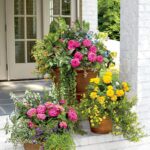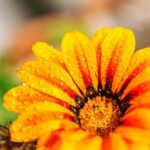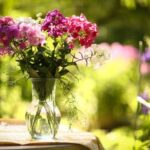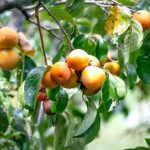Landscape design plan ideas are essential for creating a beautiful and functional outdoor space. From selecting the right plants to incorporating hardscaping elements, a well-thought-out landscape design plan can transform any outdoor area into a stunning oasis. In this blog post, we will explore the key elements of landscape design, designing for different spaces, incorporating hardscaping elements, choosing the right plants, sustainable landscape design, incorporating outdoor features, and provide case studies and examples of successful landscape design plans.
Landscape design is the art of arranging and modifying the features of a yard or outdoor space for aesthetic or practical purposes. A thoughtfully designed landscape not only enhances the visual appeal of a property but also increases its overall value. Throughout this article, we will delve into the importance of having a well-planned landscape design in order to achieve your desired outdoor aesthetic and functionality.
We will cover various aspects of landscape design, including key elements that make up a comprehensive plan, tips for designing landscapes in different spaces such as front yards and small urban areas, and ideas for incorporating hardscaping elements like pathways and patios. Additionally, we’ll discuss the importance of choosing the right plants and how to create sustainable landscaping that reduces water usage and maintenance while still being visually appealing.
We will also explore ways to incorporate outdoor features such as fire pits and seating areas to create inviting living spaces. Get ready to be inspired by real-life case studies and examples with before-and-after photos that showcase successful landscape transformations.
Key Elements of Landscape Design
When it comes to creating a stunning and functional outdoor space, having a well-thought-out landscape design plan is essential. The key elements of landscape design are crucial in achieving a cohesive and visually appealing result. From the layout of hardscaping elements to the selection of the right plants, each component plays a significant role in shaping the overall design.
Layout and Organization
One of the fundamental elements of landscape design is the layout and organization of various features within the space. This includes determining the placement of pathways, outdoor living areas, plant beds, and other hardscaping elements. An effective layout takes into consideration factors such as traffic flow, focal points, and functional zones within the landscape.
Plant Selection
Choosing the right plants for your landscape is another critical element that should be carefully considered in your design plan. It’s important to select plants that thrive in the local climate and soil conditions, as well as complement each other in terms of color, texture, and seasonal interest. The selection of trees, shrubs, flowers, and other types of vegetation should also take into account their mature size and growth habits for long-term planning.
Hardscaping Elements
The incorporation of hardscaping elements such as pathways, patios, retaining walls, and decorative structures is another key component in landscape design. These features not only add form and function to the outdoor space but also serve as defining elements that can shape the overall aesthetic. Selecting appropriate materials that harmonize with the architectural style of your home and complement the surrounding environment is crucial for creating a cohesive design.
By understanding these key elements of landscape design and how they contribute to the overall plan, you can create an outdoor space that is not only visually stunning but also tailored to your specific needs and preferences. Whether you’re designing for a front yard or a small urban space, incorporating these components thoughtfully will result in a landscape that enhances your property while providing enjoyment for years to come.
Designing for Different Spaces
When it comes to landscape design plan ideas, it is crucial to consider the specific space you are working with. Whether it’s a front yard, backyard, or a small urban space, each area presents its own set of challenges and opportunities for creating a beautiful and functional outdoor environment.
For front yards, it’s important to create a welcoming entrance to your home while also considering factors such as curb appeal and maintenance. One popular idea is to incorporate a mix of colorful flowers, well-manicured shrubs, and a neatly trimmed lawn to create an inviting entryway. Incorporating features like a pathway leading up to the front door or an eye-catching focal point can also enhance the overall design.
When working with backyards, the focus shifts more towards creating a space for relaxation and entertaining. Consideration should be given to incorporating elements such as outdoor seating areas, dining spaces, and possibly even features like a fire pit or water feature. Maximizing space in smaller urban areas can be achieved through vertical gardening, utilizing container plants, and creative layout designs that make the most of limited square footage.
No matter the size or type of space you’re working with, maximizing functionality while also creating an aesthetically pleasing design should always be at the forefront of any landscape design plan ideas. By carefully considering the unique characteristics of each space and tailoring your design to fit those specific needs, you can create a landscape that not only looks great but also serves its intended purpose effectively.
Incorporating Hardscaping Elements
Hardscaping elements play a crucial role in landscape design, adding structure, functionality, and visual interest to outdoor spaces. When creating a landscape design plan, it’s important to carefully consider how hardscaping elements can be incorporated to enhance the overall look and feel of the design. This section will discuss the various ideas for incorporating hardscaping elements into your landscape design plan.
One of the key aspects of hardscaping is creating pathways and patios. These elements not only provide practical walking and seating areas but also serve as focal points in the overall design. When selecting materials for pathways and patios, it’s essential to consider durability, aesthetics, and how they complement the surrounding vegetation. For example, natural stone or brick can create a charming and rustic look, while concrete pavers offer a more modern and clean appearance.
In addition to pathways and patios, retaining walls are another important hardscaping element that helps define outdoor spaces and manage soil erosion on sloped terrains. Retaining walls can be constructed using various materials such as stone, concrete blocks, or wood, allowing for versatile designs that blend seamlessly with the natural environment. Properly integrating these hardscaping elements into your landscape design plan will result in a cohesive and visually appealing outdoor space.
| Hardscaping Element | Ideas for Incorporation |
|---|---|
| Pathways | Select durable materials that complement surrounding vegetation for both practical use and aesthetic appeal. |
| Patios | Consider different material options such as natural stone, brick or concrete pavers to achieve the desired look. |
| Retaining Walls | Choose suitable materials like stone or wood that can effectively control soil erosion while enhancing the overall design. |
Choosing the Right Plants
When it comes to landscape design plan ideas, selecting the right plants is crucial to the success of the overall design. Whether you are aiming for a vibrant flower garden or a lush, green oasis, choosing plants that thrive in your local climate and soil conditions is essential. In this section, we will explore some tips and ideas for selecting the right plants for your landscape design.
Tips for Selecting Plants
One of the first steps in choosing the right plants for your landscape is to consider the local climate and soil conditions. Researching which plants are native to your area can help ensure that they will thrive in your garden. Additionally, consider factors such as sunlight exposure, water requirements, and maintenance needs when selecting plants for your landscape design plan.
Ideas for Creating Visually Appealing Plant Combinations
Another important aspect of plant selection is creating visually appealing combinations and groupings. Consider incorporating a variety of textures, colors, and heights to add visual interest to your garden. Mixing different types of vegetation such as trees, shrubs, flowers, and ornamental grasses can create a dynamic and aesthetically pleasing landscape.
Considerations for Incorporating Trees, Shrubs, Flowers
When choosing plants for your landscape design plan, it’s important to consider how different types of vegetation will work together in the space. For example, trees can provide shade and height to a garden, while shrubs can act as natural borders or focal points. Flowers add bursts of color and fragrance throughout the seasons. By carefully selecting and placing these elements within your design, you can create a harmonious and well-balanced landscape.
Sustainable Landscape Design
When it comes to landscape design, sustainability is a crucial factor to consider. Designing a sustainable landscape not only benefits the environment but also creates a low-maintenance and cost-effective outdoor space. Here are some key ideas and tips for incorporating sustainable elements into your landscape design plan:
- Use native plants: One of the best ways to promote sustainability in your landscape design is by using native plants. These plants are naturally adapted to the local climate and soil conditions, reducing the need for excessive water, fertilizers, and pesticides.
- Create a rain garden: A rain garden is a sunken area planted with native vegetation that helps absorb rainwater runoff from roofs, sidewalks, and driveways. This not only reduces erosion but also helps recharge groundwater supplies while minimizing pollution in nearby bodies of water.
- Choose permeable hardscaping materials: When incorporating hardscaping elements such as pathways and patios, opt for permeable materials like gravel or permeable pavers. These allow rainwater to soak into the ground instead of contributing to stormwater runoff.
In addition to these ideas, reducing water usage is another important aspect of sustainable landscape design. Consider implementing drip irrigation systems or installing a rainwater harvesting system to capture and store rainwater for future use in your garden. Designing with these sustainable principles in mind can help create a beautiful, eco-friendly landscape that benefits both the environment and your wallet.
Finally, when planning your sustainable landscape design, it’s essential to consider long-term maintenance needs. By creating a low-maintenance landscape with minimal inputs required, you’ll be able to enjoy your outdoor space while minimizing its impact on the environment. Whether you’re designing for a residential property or a commercial space, incorporating sustainable elements into your landscape design plan can lead to an attractive and environmentally responsible outdoor space.
Incorporating Outdoor Features
When creating a landscape design plan, incorporating outdoor features is an essential aspect of creating a functional and inviting outdoor space. These features can include fire pits, water features, seating areas, lighting, and other decorative elements. The key to successfully incorporating these outdoor features is to carefully consider the layout and purpose of the space, as well as the overall aesthetic of the design.
One of the most popular outdoor features is a fire pit, which can serve as a focal point for gathering with friends and family, as well as providing warmth and ambiance on cool evenings. When incorporating a fire pit into your landscape design plan, it is important to consider factors such as safety, fuel source (wood-burning or gas), and placement within the overall layout of the space.
Another popular outdoor feature is water elements such as fountains, ponds, or waterfalls. These features can add a sense of tranquility and natural beauty to the landscape. When considering incorporating water features into your design plan, it’s important to think about maintenance requirements and potential impact on local wildlife. Additionally outdoor seating areas are also an important feature in landscape design plans – allowing residents or visitors to enjoy their beautiful surroundings comfortably.
One way to create a cohesive and inviting outdoor living space is by strategically placing lighting throughout the landscape. Lighting not only enhances safety and security but also adds visual interest after dark. Including all these components will result in creating an inviting environment perfect for relaxing or entertaining outdoors within your property.
| Outdoor Feature | Considerations |
|---|---|
| Fire pit | Safety precautions, fuel source options |
| Water Features | Maintenance requirements & conservation consideration |
| Seating Areas & Lighting | Safety concerns & energy-efficient sources. |
Case Studies and Examples
When it comes to landscape design plan ideas, nothing beats real-life examples and case studies to inspire and guide your own project. Here are some successful landscape design plans that showcase creativity, functionality, and beauty:
- Before and After Transformations: These case studies provide a visual representation of the impact of a well-executed landscape design plan. Seeing the transformation from a plain or neglected space into a stunning outdoor oasis can be incredibly motivating for anyone considering their own project.
- Creative Use of Space: Case studies that highlight creative solutions for challenging spaces, such as small urban backyards or sloped terrain, can offer valuable insights for those dealing with similar constraints. From vertical gardens to multi-purpose seating areas, these examples demonstrate how ingenuity can overcome limitations.
- Sustainable Design Showcase: Look for case studies that emphasize sustainability and eco-friendly practices in their landscape design plans. These examples can include the use of native plants, rainwater harvesting systems, or permeable paving materials, showcasing how beautiful, functional landscapes can also be environmentally conscious.
It’s also beneficial to seek out interviews with professional landscape designers who have successfully completed various projects. Getting insider tips and hearing about their process and decision-making can provide invaluable guidance as you embark on your own landscape design journey.
Conclusion
In conclusion, landscape design plan ideas are essential for creating a beautiful and functional outdoor space. By carefully considering key elements such as layout, hardscaping, plant selection, sustainability, and outdoor features, homeowners can create a landscape that meets their needs and enhances the overall aesthetics of their property. Whether designing for a small urban space or a sprawling backyard, there are endless possibilities for creating a personalized and inviting outdoor environment.
It is important to recognize that a well-thought-out landscape design plan not only adds value to a property but also provides numerous environmental benefits. Sustainable practices, such as using native plants and reducing water usage, can contribute to the long-term health of the ecosystem and support local wildlife. Additionally, incorporating outdoor features like fire pits and seating areas can encourage homeowners to spend more time outdoors and connect with nature.
As this article has highlighted various aspects of landscape design planning, I encourage readers to start envisioning their own ideal outdoor space. By taking inspiration from the tips and ideas presented here, homeowners can begin the process of creating a landscape that reflects their individual style and meets their practical needs. With careful planning and thoughtful consideration of each element, it is possible to transform any outdoor area into a stunning and sustainable oasis.
Frequently Asked Questions
How Do I Make a Landscape Design Plan?
Making a landscape design plan involves several steps. First, it’s important to assess the site, taking into consideration factors like topography, existing vegetation, and any potential challenges. Next, creating a rough sketch or blueprint of the desired design can help visualize the end result.
Then, selecting the appropriate plants and materials based on the climate and soil conditions is crucial. Finally, incorporating elements such as paths, water features, and outdoor structures can enhance the overall design.
What Are the 7 Steps to Landscape Design?
The 7 steps to landscape design typically include: site analysis, developing a rough sketch or blueprint, considering the functionality of the space, choosing the right plants and materials for the site’s specific conditions, designing for year-round appeal by incorporating seasonal interest and diversity in plant selections, adding hardscape elements like pathways or structures to enhance usability, and lastly refining and finalizing the plan before implementing it.
What Are the 5 Basic Elements of Landscape Design?
The five basic elements of landscape design are line, form, texture,colorand scale Line refers to the arrangement of plants or structures that lead the eye through a space. Form relates to the shape and structure of individual plantings or hardscaping elements within the landscape. Texture involves mixing different plant types with varying leaf sizes and shapes to create visual interest.
Color plays a crucial role in establishing moods and focal points within a landscape design. Scale deals with ensuring that all components in a landscape are in proportion to one another to create balance and cohesion in the overall layout.

Welcome to my gardening blog! I am passionate about plants and enjoy sharing my knowledge and experiences with others. In this blog, I will write about everything related to gardening, from tips on how to get started to updates on my own garden projects.





